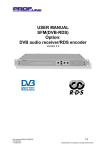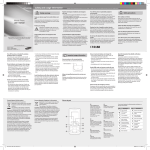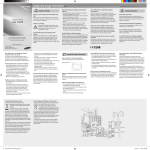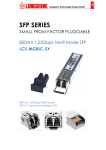Download PDF Version
Transcript
HOME V700 PRO AUDIO CLOSE U794 HOME EMAIL PDF Version User Manual Harmonics Distortion Generator with Bandpass Filters U794 V700 Mastering Modules Harmonics Distortion Generator Home | V700 Mastering Home The Harmonics Distortion Generator U794 is available in different versions. Custom control ranges for several controls are possible as well as different versions of the faceplate and the control knobs. The modules are available with electronically or transformer balanced outputs. The inputs are always transformer balanced For a general information on the module, please change over to the Harmonics Distortion Generator Homepage Initial Settings | Quickstart | Options | FAQ's | PDF Version Control Elements 1 2 General Distortion k2 This control adds 2nd harmonics to the signal, which means that components, 1 octave above the original are added. The section operates frequency independent, but the percentage of harmonics depends on the input level. The relation is not exactly linear. With higher levels, the increase of distortion is a little lower. (raising the level by 6 dB increases the harmonics by approx. 2 dB). The control range and law is well adapted and can add small amounts of harmonics that are mostly used precisely. 2nd harmonics are typical for all kinds of active components, triodes, transistors, FETs and practically everything else that can be use for amplifcation. Adding k2 causes the same kind of distortion as vintage tube amplifiers with triodes. General Distortion k3 This control adds 3rd harmonics (the quint above the octave) to the original. The control shifts a soft transition into a clipping curve that is quite similar to the characteristics of a pentode towards lower levels. The transition range begins about 10 dB below the clipping level. This part of the effect makes possible to add the coloroísation of a pentode to the signal. When set all to the right, the transition range starts at 0 dBu. In addition, the input transformer is treated in a way, that it produces typical transformer distortion which occurs at low frequencies only. The two effects are adapted in a way that the reaction is quite similar to a hard driven tube amplifier with transformers and pentodes; however, this control is not a tube sound simulator. It just generates the same kind of harmonics distortion. Like the k2 general control, this control adds another interesting color to the signal. Notes and Pecularities Over more than 50 years of recording we all got used to the typical side effects of audio recording. Distortion, mainly 2nd and 3rd harmonics a directly connected not only to amplification but to the analog storage methods on disc and tape. When these effects are not present, we usually don't consider this as advantage. In fact we do not appreciate the absence of the small percentage of distortion we are used to, which is described with terms like 'warm' and 'musical'. We also don't like too much of that kind distortion; as soon as the distortion reaches a certain point, it's getting disturbing. Though digital audio has many disadvantages, harmonics distortion is not an issue with digital audio. It's free from those effects. Therefore adding a little percentage of appropriate distortion results in a mix that subjectively sounds better. In addition, the balance between 2nd and 3rd harmonics is important for the subjetive impression. Two much of one or other, againg results in this 'I'm missing something' feeling. 3 to 9 - k2 Harmonics Generator and Filter This section generates and adds 2nd harmonics. The high-pass (3/4) and low-pass (5/6) filter control the frequency band that is fed to the generator. The drive control (8) shifts the level at the input and output of the harmonics generator into an appropriate range. The ADD k2 control (9) allows to add the generated harmonics in phase (to the right) or phase reversed (to the left). At the center position of this control no harmonics are added. 3 Low-pass Filter Control The low-pass filter limits the frequency band pre the harmonics generator. The control range depends on the multiplier switch (4). With the multiplier the sweep range covers the entire audio band from 40 Hz to 20 kHz. Together with the high pass filter, band-pass filtering is possible. High-pass and low-pass filter together form a bandpass filter that allows selection of any frequency band in the audio frequency range from 20 Hz to 20 kHz. Generating distortion only in a certain frequency band 4 Low-pass Filter Multiplier this switch multiplies the frequency range of the low pass filter control by 0.1 from 20 kHz - 400 Hz to 2 kHz - 40 Hz. 5 High-pass Filter Control The high-pass filter limits the frequency band pre the harmonics generator. The control range depends on the multiplier switch (6). With the multiplier the sweep range covers the entire audio band from 20 Hz to 20 kHz. Together with the low pass filter, band-pass filtering is possible. 6 High-pass Filter Multiplier this switch multiplies the frequency range of the high pass filter control by 10 from 20 Hz - 2 Hz to 200 Hz - 20 kHz. 7/8 Drive Control and Level Indicator The Drive Control determines the operation level of the harmonics generator section. Turning the control to the right raises the input level of the generator and reduces its output level and vice versa. The control range is +/- 20 dB. The operation level of the generator is cruicial for a clean harmonics signal with sufficient output level. The LED indicator displays the level in relation the optimum drive of the generator. With green color the level is too low (turn the Drive control to the right), yellow to orange color displays correct level, while red color indicates clipping of the generator. 9 ADD k2 this control adds the output signal of the harmonics generator to the original signal. At the center position, no harmonics are added. The range to the right adds distortion in phase; the range to left adds phase reversed distortion. Both methods result in different effects with almost all audio signals. The scaling of this control gives you an idea about the percentage of harmonics you add; however, the percentage of distortion depends on the level, so the scaling is actually only relevant if the LED indicator (7) is orange. is the most effective way to add interesting colors to a mix. You can focus the harmonics on the band that offers the best effects, without the need to consider if other frequencies cause negative effects. Generator Level and Drive Control The harmonics generator is an almost ideal 4-quadrant multiplier that squares the input signal precisely. Squaring results in doubling the frequency, which results in clean octaves and not in a mix of different harmonics; however, squaring also squares the voltage. If the input voltage of the generator is 1 V, the output voltage is 1 V2, so the output voltage is still 1 V. When the level is down by 10 dB = 0.316 V the output voltage is 0.316 V2 = 0.1 Volts. Raising the voltage by 10 dB to 3.16 V on the other hand changes the output voltage to 3.16 V 2 = 10 Volts. It easy to see that any input level difference results in a difference in the generated harmonics of twice the dB value. Since using the filters can result in entirely different levels at the output of the filter section it is necessary to adjust the drive control, that can shift the input level of the generator into an appropriate range for propper operation. 10 to 16 - k3 Harmonics Generator and Filter This section generates and adds 3rd harmonics. The high-pass (10/11) and lowpass (12/13) filter control the frequency band that is fed to the generator. The drive control (14) shifts the level at the input and output of the harmonics generator into an appropriate range. The ADD k3 control (16) allows to add the generated harmonics in phase (to the right) or phase reversed (to the left). At the center position of this control no harmonics are added. 10 Low-pass Filter Control The low-pass filter limits the frequency band pre the harmonics generator. The control range depends on the multiplier switch (4). With the multiplier the sweep range covers the entire audio band from 40 Hz to 20 kHz. Together with the high pass filter, band-pass filtering is possible. 11 Low-pass Filter Multiplier this switch multiplies the frequency range of the low pass filter control by 0.1 from 20 kHz - 400 Hz to 2 kHz - 40 Hz. 12 High-pass Filter Control The high-pass filter limits the frequency band pre the harmonics generator. The control range depends on the multiplier switch (6). With the multiplier the sweep range covers the entire audio band from 20 Hz to 20 kHz. Together with the low pass filter, band-pass filtering is possible. 13 High-pass Filter Multiplier this switch multiplies the frequency range of the high pass filter control by 10 from 20 Hz - 2 Hz to 200 Hz - 20 kHz. High-pass and low-pass filter together form a bandpass filter that allows selection of any frequency band in the audio frequency range from 20 Hz to 20 kHz. Generating distortion only in a certain frequency band is the most effective way to add interesting colors to a mix. You can focus the harmonics on that band, that offers the best effects, without the need to consider if other frequencies cause negative effects. Generator Level and Drive Control The harmonics generator is an almost ideal 4-quadrant multiplier that cubes the input signal precisely. Cubing results in multiplying the frequency by 3, which results in clean 14/15 Drive Control and Level Indicator The Drive Control determines the operation level of the harmonics generator section. Turning the control to the right raises the the input level of the generator and reduces its output level and vice versa. The control range is +/- 20 dB. The operation level of the generator is cruicial for an clean harmonics signal with sufficient output level. The LED indicator displays the level in relation the optimum drive of the generator. With green color the level is too low (turn the Drive control to the right), yellow to orange color displays correct level, while red color indicates clipping of the generator. 16 ADD k2 this control adds the output signal of the harmonics generator to the original signal. At the center position, no harmonics are added. The range to the right adds distortion in phase; the range to left adds phase reversed distortion. Both methods result in different effects with almost all audio signals. The scaling of this control gives you an idea about the percentage of harmonics you add; however, the percentage of distortion depends on the level, so the scaling is actually only relevant if the LED indicator (7) is orange. 17 ON Switch This switch inserts the module. Unless the ON swtich is pressed, the module is hard-bypassed by relays. Input and output connectors are bridges and the inputs and ouputs of the module are switched away from the connectors. The inputs do not load the driving source when bypassed. quints above the octave and not in a mix of different harmonics; however, cubing also cubes the voltage. If the input voltage of the generator is 1 V, the output voltage is 1 V3, so the output voltage is still 1 V. When the level is down by 10 dB = 0.316 V the output voltage is 0.316 V3 = 0.0316 Volts. Raising the voltage by 10 dB to 3.16 V on the other hand changes the output voltage to 3.16 V 3 = 31.6 Volts which means that the generator clips. It is easy to see that any input level difference results in a difference in the generated harmonics of three times the dB value. Since using the filters can result in entirely different levels at the output of the filter section it is necessary to adjust the drive control, that can shift the input level of the generator into an appropriate range for propper operation. Initial Setting The following setting results in a neutral setting of all stages: 1. Insert the unit with the ON switch (17) 2. Set the General Distortion k2 control (1) all to the left (no distortion will be added) 3. Set the General Distortion k3 control (2) all to the left (no distortion will be added) 4. Set the ADD k2 control (9) to the 0 position (center - no distortion will be added) 5. Set the ADD k3 control (16) to the 0 position (center - no distortion will be added) 6. Set the Drive Control (8) to the 0 position (center - no level shift) 7. Set the Drive Control (14) to the 0 position (center - no level shift) 8. Release the Mult switches (4, 6, 11, 13) of the filters 9. Set the low pass filter controls (3 / 10) all to the right 10. Set the high pass filter controls (5 / 12) all to the left ...TOP Quickstart a) Using the different functions of the harmonics generator depends on the taste of the engineer and producer and on the structure mix. Therefore, there is no general procedure for the adjustment. b) Since the only problems that might come up are too much distortion in the output signal and/or too high level on one of the harmonics generators, nothing else has tobe considered that is of any importance. c) Make sure that the drive controls (8 & 14) are set to a position where the level indicators (7 & 15) are yellow to orange but not red, to make shure that the input level of the generators is okay for propper operation. If the level throughout the mix is not constant, use a high level passage for the setting. ...TOP Options: Control Ranges We can adapt the control ranges to your needs. Please let us know what you are looking for here. Inputs and Outputs The modules is available with electronically balanced and transformer balanced outputs. The inputs are always transformer balances, since the input transformers are included in the General k3 section. Appearance The colors of the faceplate, the control knobs, and switch caps can be determined by the customer. Please, check for details here. ...TOP FAQ's Why is the distortion level so different when I use the filters extensively? The effect of different input levels on the harmonics generator section is explained in detail in the boxes for k2 and k3. Please read the text to learn about the background. When using the filters extensively to cut out a small band, it depends on the spectrum of the mix how this filter setting affects the output level. Usually the level will drop dramatically when the frequency band is very small. Any kind of additional regulation would result in some kind of compressor at the input of the generators to keep the input level in a constant range. However, this would also result in an entirely different behavior of the generators. Every time the level drops, the regulator would drive up the level again, so the distortion would not drop down with the level but remain constant or at least high, also with low input levels. Of course there is no rule to determine a threshold level for the regulation in general, since the filtering makes necessary that also very low levels that result from filtering of small bands, can be processed. The only way out is to use the drive control in combination with the level indicator. Affects the General Distortion settings the k2 and k3 generators? Yes, the output of the general distortion section drives both the k2 generator and the k3 generator. Affects the k2 setting the k3 generator? No, only the general distortion section affects the generators. The k2 and the k3 section is driven from the output of the general distortion section. The outputs are added directly to the output driver amplifier. I've been using the drive control to shift the level up till the LED was red. The harmonics are different but sound very nice. What happens with this setting? When the LED indicator color becomes red, the input level will exceed the linear operation range of the particular generator. With red color, you simply clip the generator. It will not output clean k2 or k3 anymore but a mix of different harmonics. The combination of the harmonics is different from the effect that occurs when clipping a normal amplifier. In addition, both generators react differently. There is no reason why you shouldn't use this range if the result is of advantage. It's not the intended use, but you will not damage anything or get any disadvantage from using that range. The general k3 control is very intested; however, it would be a perfect thing if there are some more controls to modify the behaviour. Is this possible? Yes and no. The network that simulates the pentode is designed in a way, that the transition range is very high to allow sensitive regulation and to produce high k3 and low k2 and k4 harmonics. If you tell us what you'de like, we can change this network. There is no room for more controls on the faceplate of the U794 anymore, so additional pots to modify the behaviour of the network are not possible. Please have look at the U784 Colorizer that offers some different distortion effects. In addition we are pondering on an additional device that offers one or two networks with a full set of controls for the modification of the behaviour. If this module is of interest for some customers, we're gonna make it in the near future. If you have any questions or comments, please let us know. ...Top V700 Index | Sitemap






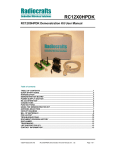
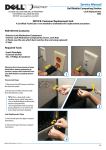
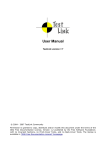
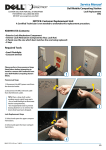
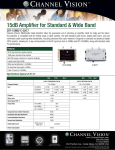
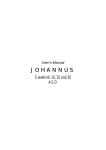
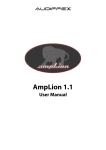
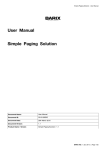
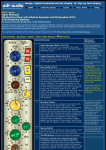
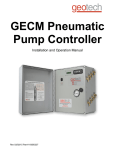
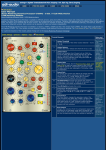

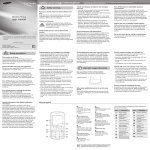
![ACTIVALL - Instrukcja Obsługi_EN [w5] - Akces](http://vs1.manualzilla.com/store/data/005768844_1-d053a11c07508a5544c783645c43d650-150x150.png)
